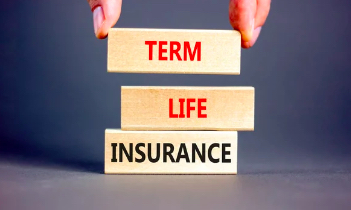 The type of life insurance that’s right for you depends on a few factors. These include the cost of premium payments, how much coverage you want, and whether you’d like to add riders that give you flexibility.
The type of life insurance that’s right for you depends on a few factors. These include the cost of premium payments, how much coverage you want, and whether you’d like to add riders that give you flexibility.
You’ll also need to choose beneficiaries. These are the people who’ll receive the death benefit when you die. For more information, click on Life Insurance Companies Las Vegas to proceed.
The underwriting process is an essential step in determining your eligibility for life insurance. It involves assessing your financial and health status to determine risk. The process is supervised by a specialist known as an underwriter, who carefully examines your application. The underwriter is also responsible for establishing the premium rate for the policy. The underwriter uses a range of factors to assess your eligibility for life insurance, including your age, family history, and lifestyle habits. The underwriter may even check your medical records to verify the information on your application.
The first step in the underwriting process is an evaluation of your application form. You will need to provide basic information, such as your name, address, occupation, net worth, and height and weight. In addition, the insurer may require financial documents, such as salary slips, a copy of your Aadhar card and PAN card, credit card statements, bank statements, and investments to assess your finances.
Once the underwriter has verified your personal information, they will review the results of your medical exam. An accredited paramedical expert conducts this exam and typically includes basic measurements, such as your height-to-weight ratio, blood work, a urine test, and disclosure of any major illnesses or diseases. The underwriter will then classify you based on your risk classification.
If you are a smoker, you will likely be classified as high-risk and have to pay higher premiums. Other factors that will influence your premium include your family medical history, smoking and alcohol consumption, and your hobbies and lifestyle. If you have a history of serious illnesses or health problems, you will need to undergo a more extensive underwriting process. However, there are life insurance options that do not require underwriting, such as no-exam policies and guaranteed issue policies.
In addition to paying for the policyholder’s death benefit, life insurance premiums provide income to an insurer. This money pays for the company’s day-to-day operations and also helps pay claims and other policyholder payouts. Insurers must also set aside a portion of their premiums as reserves to cover future expenses and potential claims.
The cost of life insurance depends on a variety of factors. The type of coverage you choose, your age, and underwriting conditions like health issues or risky lifestyle choices (like smoking) can all affect premiums. Generally, the older you are and the more coverage you get, the higher your premium will be.
Gender is another factor that influences life insurance rates, with women typically paying less than men for the same amount of coverage. Your height and weight also have a significant impact on your life insurance rate, since an insurer uses these measurements as a way to gauge your body mass index, which is used as a proxy for overall health and fitness.
If you’re in the market for life insurance, it’s important to take your time and research different policies. A financial professional can help you understand the differences between policy types and present options that may best meet your unique needs. They can also assist with the life insurance application process and review all of your information to ensure it’s accurate. Once you’ve selected the right policy, it’s important to keep up with your premium payments to avoid any penalties. If you miss a payment, your policy will be canceled, and you won’t receive any of the benefits associated with it until you’ve paid the missed premium in full.
Riders are add-ons to a life insurance policy that provide additional coverage for different circumstances. They are a good option for people who want to protect their loved ones from the financial impact of certain life events, such as permanent disability, terminal illness and a stroke. Some riders are included in the basic life insurance policy, while others come at a cost and require medical underwriting.
The most common rider is a spousal or two-party benefit, which pays out if a spouse dies before the policyholder. This can be an attractive feature for couples with significant debt who want to pay off their mortgages and other expenses before their death.
Another popular rider is a critical illness rider, which allows you to claim a portion of your death benefit while you’re alive. This can help you pay for care and other expenses, but it’s important to understand that the money you receive from this rider will reduce your death benefit and may have tax consequences.
Lastly, a paid-up additions (PUA) rider lets you buy more life insurance coverage at specific times without having to undergo a health exam. It works like a mini whole life insurance policy with its own death benefit and cash value, which can grow with premium payments, deposits or dividends. It’s a good choice for people who have a family history of serious illness that could affect them before age 45 or those who want to buy a permanent policy with the flexibility to increase their coverage later.
Many other riders are available, but they can change the price of your premium significantly. Discussing your options with a financial professional who can give you unbiased advice about whether the rider is worth the extra cost is important.
Life insurance can help give your loved ones peace of mind after you pass away. It can also cover debts and expenses, including final costs and income replacement. A financial professional can help you determine how much coverage you need. He or she can explain the different types of policies and their features and present options that meet your needs.
You can choose a term policy or a permanent life insurance (also known as whole life) plan. Term policies have fixed premiums that stay the same for a specified period of time, while permanent plans build up cash value over time. In some cases, the cash value can be borrowed. However, outstanding loans will reduce the death benefit.
Many permanent policies are also designed to pay dividends, which you can use to lower your premium or increase the death benefit. The amount of dividends is not guaranteed, and they are typically based on the company’s experience with mortality, expense and investment performance.
Some insurers offer no-exam policies, called guaranteed issue life insurance, which don’t require a medical exam and can process applications in a day or a week. This type of life insurance is generally more expensive than other options, though. In addition, these policies may come with higher mortality and expenses charges, and you might not be able to switch companies later. The best way to find the right life insurance is to work with an independent broker who can compare products from multiple insurers. A reputable agent will be unbiased and can recommend the policies that are right for you. He or she will also explain the benefits and drawbacks of each type of life insurance.
A life insurance beneficiary is the person or entity who receives your policy’s death benefit. This may include a spouse, children, or other family members. Many policies also allow you to designate a secondary, or contingent, beneficiary. The secondary beneficiaries are those who will receive your life insurance payout if the primary beneficiary dies before you.
It’s important to think through your beneficiary choices carefully and not simply pick the first person that comes to mind. For example, if you name your children as beneficiaries, it’s a good idea to think through whether or not they will be capable of managing large sums of money responsibly on their own. You should also consider whether you would like to work with a financial professional or estate planner to set up a trust for your children so that the money can be managed by a trusted adult until they are ready to use it.
When naming your beneficiaries, you should always use the full legal name of each person or entity, as this will help ensure that the insurance company can locate them quickly. It’s also a good idea to include information such as each beneficiary’s Social Security number, date of birth and relationship to you so that the insurer can verify their identity.
You can change your life insurance beneficiaries at any time. However, there are some situations where you will need the consent of a beneficiary in order to do so, such as in the event of divorce or if you have made what’s called an irrevocable beneficiary designation on an account or policy. For this reason, it’s a good idea to check the list of your beneficiaries periodically and make changes as needed.

